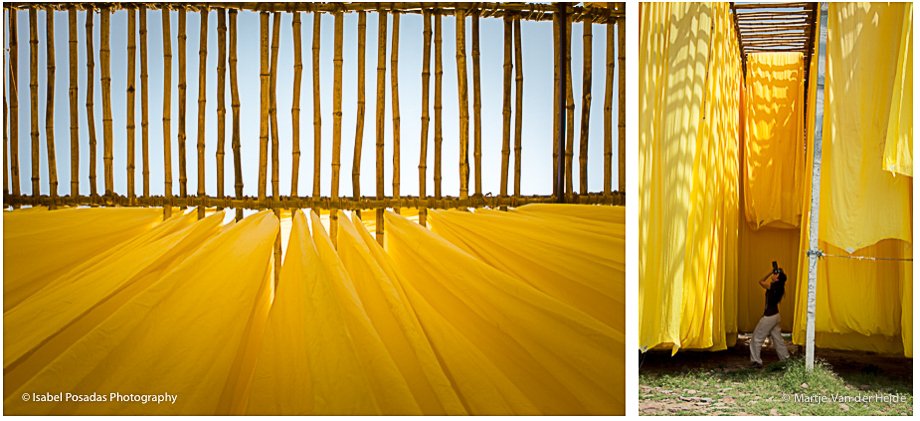When we were living in Abu Dhabi a client told me “You have to go to the villages to see the best of India, cities are too chaotic, villages have a special charm”. She was right. This time I have decided to show not only a colorful face but some beautiful and old traditions that up to date are still a very important part of Indian life. My friend Martje and I had an amazing time in Sanganer, a village situated a few kilometres from Jaipur, capital of Rajasthan. Internationally known for its famous handmade paper, fine block and screen printing textiles, Sanganer exports beautiful dyed, printed colourful dresses, sarees, bed covers, curtains and a variety of other textiles all over the world. We had the opportunity to see almost every step of the process of block printing. I left the place with a feeling of admiration for such beautiful hard work that not only keeps alive an Indian old tradition but that has an important impact on the country´s economy.
The Chhippa cast hands over their craft skills down the generations, from parent to child, therefore, the expertise and know-how remains within the family.
BLOCK PRINTING, PREPARING THE FABRICS
Scouring or Hari Sarana
The fabric that comes from mills of handloom sector contains impurities such as starch, oil and dust. The clothes go through a rigorous scouring and bleaching procedure. Traditionally camel or cow dung are mixed with sesame oil and soda ash and the cloth is then soaked in this solution overnight. The next day, the clothes are rinsed and let them dry in the sun. At evening time the fabrics are washed in the same solution and the procedure is repeated everyday for about a week. To make the process easier, some people have replaced the cow or camel dung with commercial soap. 
Tannin or Peela Karana
Literally translated as “to do yellow”, this process involves the application of harda onto the cotton cloth. The Harda is a dried powder extracted from the fruit of the myroballan tree and has high levels of tannic acid. The tannin functions as a pre-mordant, a link between the fibres and the subsequent printed applications of various ingredients. Harda powder is mixed with water, and the cloth is submerged in it, squeezed and dried.
Printing or chapai
The fabric is printed with two mordant ferrous (syahee) made out of rusted horse shoe nails, and alum (beggar). Usually ferrous is printed with the outline block. As it immediately shows a black impression, it is easy for another printer to place the filler block with beggar or alum. The background block comes later. 
Ageing or Sukhai
The printed fabric is left hanging at the printing areas for at least three or four days so that the prints penetrates into the fiber structure. Longer ageing better the result. 






Washing or dhulai
Once printing is complete the cloth needs to be thoroughly washed in order to remove the excess of mordants; otherwise, the dyes might soak into the fibres during the next step. 


Dyeing (fixing of color) or Ghan Rangai
Dyeing is carried out in large copper vessels which are heated by wood fire. The arisans add red dye matter together with either insect gall or fire flame bush and a drop of castor or sesame oil.
Sun-bleaching or Tapai
To bleach the white background and brighten the printed designs, the fabrics have to be washed again. The process is done for eight to ten days.




Cutting and transportation
Stay tuned, block and screen printing coming soon!












